Shake, jingle, scrape, click!
There is an excitement that fills the room when I bring in a rhythm band activity. The children can hardly contain themselves and want a chance to be part of the “performing band.”
I set up the boundaries:
- Real band members play their instruments with respect. If I see you using the instrument inappropriately, I take it. No questions asked.
- We practice without the instruments first.
- I give lots of opportunity to play the instrument, and we will switch instruments.
Most of the boundary setting is not spoken, but I have to know them as the “band director.” I do verbally state the first boundary about respect and no questions asked if instrument is used inappropriately. I will then head right into the activity. “Here are the patterns,” I tell the children. “I will say it, then you say it.” I point to the rhythm as I say it, and again as the children say it.
I use the words #1 = Ta, Ta, ti, ti, Ta #2 = Ta, ti, ti, Ta, Ta #3 = Ta, Shh, ti, ti, Ta #4 = Ta, ti, ti, Shh Ta so that the children have something to say when they are not yet holding their instrument to play it.
Next, I demonstrate with one of the instruments for each rhythm.
Scrape, Scrape, scrape,scrape, Scrape.
Click, Shh (don’t play), click, click, Click, and so forth. (I don’t talk in-between each rhythm. I just do them and play a different instrument for each rhythm.)
Now is their favorite part! We hand out the instruments.
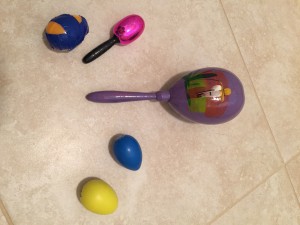
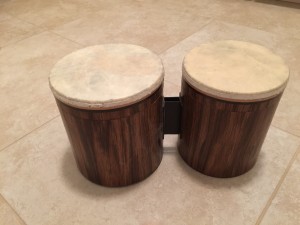
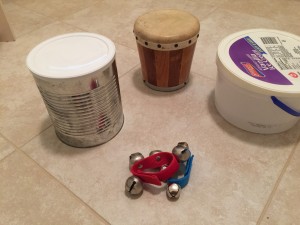 Notice the plastic Easter egg half filled with rice and taped with duct tape. Notice the #10 can and ice cream tub. Notice the paper cup with chop stick. Notice the small blocks of wood with sand paper glued to them. Notice the egg carton and dowel. The instruments do not have to be expensive. (You do not have to have all of these different types of instruments. Four different types will do. Just make sure you have enough for each child.)
Notice the plastic Easter egg half filled with rice and taped with duct tape. Notice the #10 can and ice cream tub. Notice the paper cup with chop stick. Notice the small blocks of wood with sand paper glued to them. Notice the egg carton and dowel. The instruments do not have to be expensive. (You do not have to have all of these different types of instruments. Four different types will do. Just make sure you have enough for each child.)
It takes at least 3 to 4 helper adults to pass out the instruments. (The adults need to know that we will switch instruments so that they can tell the children who say, “I want the other one,” that we will be getting a chance at several instruments.) Remember we practiced the rhythms BEFORE handing out the instruments.
I stay at the front of the room and direct the children’s attention. “As soon as you have your instrument, play with me. If you don’t have one yet, just say the rhythms with me.” I begin immediately on rhythm #1 and we go through all four rhythms. Usually by the end of that time most of the children will have an instrument.
“Freeze!” (I get the children’s attention.) “All of the scrapers – – guiros, egg cartons, and sand blocks – – play rhythm #1. Ready, play.” (Only those children play.)
“Freeze! All of the shakers – – – egg shakers and maracas- – play rhythm #2. Ready, play.”
“Freeze!” (I actually am pretty strict about them freezing their instrument and hands, and being quiet before I will go on.) “All of the clickers – – rhythm sticks, tone blocks, coconut shells, and paper cups – – – play rhythm #3. Ready, play.”
“Freeze! All of the jingle and thumpers – – drums and jingle bells – – play rhythm #4.”
“Freeze! I need one person to be the leader for each group. Keep your instruments frozen as they come up.” I choose 4 of the children and they come to the front of the room. I am standing by the whiteboard or chalkboard that has the rhythms. The call to freeze gives the children a chance to self-regulate and self-govern, in addition to bringing some order to a very fun, but could-be-chaotic activity. <grin>
I know that it seems like that process will take forever, but I’ve timed it and it takes 2 and 1/2 minutes, and sometimes 3 minutes. It is the “set up” for this next part.
“Okay band! We are ready for the song. We will all be playing at the same time. Follow your leader! Play your part over and over again.” I count off, “One, Two, Three, Four!” We start the rhythm patterns. After the first time through, I sing the verse and chorus to “Follow the Prophet” as they play their instrument part over and over again. At the end of the song, I make a big deal about cutting them off and stopping the sound. “Now, the band has to stand and bow.” We all bow.
“Find someone with a different instrument and switch instruments!” I let the children mostly run this process themselves, but it might need some adult guidance from some of the three helpers. I give this process about 30 seconds, then say, “Ready—– One, Two, Three, Four.” We play the patterns again as I sing the song the second time. (Not much talk, just doing and singing and playing.) Again, a big finish and a bow.
Sometimes the children will be singing with me, but often they are too busy concentrating to sing. If you have time, switch instruments yet again so that you are singing the song a third time.
How is this helping them learn the song?
- Steady beat is a huge part of being able to sing any song, and we are physically practicing it with our bodies by playing the instruments.
- Working as a united whole is necessary to sing in a group, and we are giving intense practice in doing that.
- The children are intensely involved and participating, which captures any song being sung to those rhythms deep within their memory through the back door.
- The attitude with which the children learn a song will stick with them longer than the experience itself. The excitement, the concentration, the sense of satisfaction at having played in the rhythm band, the fun of doing the activity…. all of that sticks with the children’s memory of the song. Those emotions come up again when we sing the song. This activity is well worth it!

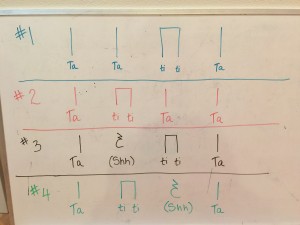
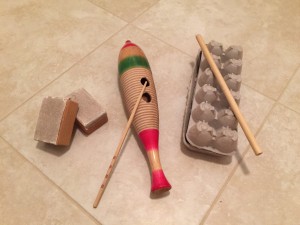
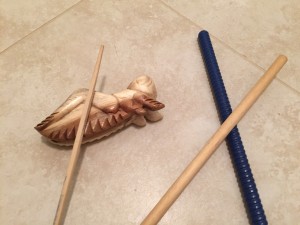
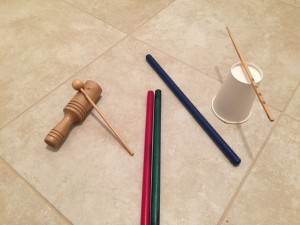
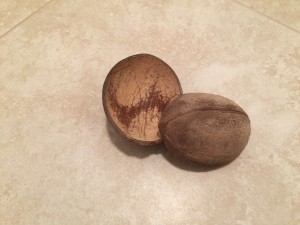
Melinda
This looks really fun. Thank you.
Jenny Bayles
I <3 you Sharla! This is fabulous! Can the younger children do this activity with just one rhythm?
Sharla Dance
Basically I team up the 6 and 7 year olds with the 3 and 4 year olds and use one rhythm with multiple instruments. Their eyes light up when we do this!
Angie
What do you mean by “team up” the 6 and 7’s with the 3’s and 4’s? What does that look like? Can you give me a little more detail? I want to do this with my primary and am having a hard time visualizing how this will look in Junior Singing time. Thanks!
Sharla Dance
I tell the older children to go find a younger child to be their friend. They choose someone to be their “buddy” and help them with the activity. I use the teachers to help everyone find a friend. I like that it brings out the compassion in the older children as they nurture their younger buddies.
Stephanie Hadfield
I really appreciate how you’ve shown us examples for instruments that we can make. Thanks!
Gina Jackson
Thank you so much for the wonderful activities you have been sharing! The kids and I have been loving them! One question I have: have you been singing several different verses of Follow the Phrophet with all these different activities or just one verse? I would like it if my primary knew 3-4 verses of the song. Just wondering how often to switch which verses we are learning. Thank you again!
Gina Jackson
Actually in looking over your outline for the month of Jan, I saw the answer! Thanks!
Stephanie Hadfield
Sharla, is there a way to contact you privately? I have a question about your book– which I purchased last year when it first came out. You can email me at stephanie (dot) hadfield (at) gmail (dot) com and then I can reply from there if that would be easiest. Forgive me for asking about it here, I just haven’t been able to find another way to get ahold of you.
cheers!
Stephanie
Katie
Hi Sharla, I am looking at the example melody maps that you have on your website. I love the idea a lot! I am planning to review “He Sent His Son” in February, and thought melody maps might be a fun/challenging activity for senior primary. I mapped it out, and I think I would need 14 different maps. Do you think that’s too many? Would you recommend doing melody maps for shorter songs?
Sharla Dance
Dear Katie,
Yes, shorter songs. I once did He Sent His Son and it was just too much for even adults! I’m making one for Come Follow Me right now and I was planning on putting it up on the blog but not for a while. Do you want a picture of it? Sharla
Serena
How do I sign up to receive updates from your blog? I really appreciate that you put a notification on the fb choristers page as I would never know. AND Thank you for all of this. You came to Boise, Idaho many moons ago with Merilee and Deanna Pond. I have used and reused what you all taught. I am back in the calling once again and just recently found the fb page and your blog. Each ward thinks it’s “magical” how the children are taught. I tell them I was taught by wonderfully wise women.
Sharla Dance
Dear Serena, Both you and I get to use all the new things we’ve learned. As to how to sign up to get notifications from the blog, my computer “guru” is in the process of setting all of that up. Could be as soon as next week. Thank you for asking so I know that somebody wants it!
Angie
Wow! All your ideas are amazing. Will you be posting any ideas for He Sent His Son? I know most wards already know it, but we had it performed as a duet last year, so most of my kids don’t reember it very well since they only sang it a few times last year and didn’t review it for the program.
Sharla Dance
Yes, I hope to get that up this week. Thank you for asking! Sharla
Angie
Thank You!
Janna Mauldin Heiner
Ideas for simple, cheap instruments–most with stuff from your local big-box lumber store:
Dowels. Lots of dowels, cut to 10″. Hit two together, or use them to hit other things, such as blocks of wood, round cartons with plastic lids (hot choc mix, baking powder, even salt boxes work), or paper cups.
8″ sections of corregated plastic pipe. Use a dowel to rub the length–a guiro! Plastic water bottles often have ribbed surfaces as well.
4″ sections of foam pipe insulation (or pool noodle), cut in half lengthwise. Hold the curved side and rub the flat side together–cheaper and easier than sandpaper blocks.
Besides the shaker eggs, small plastic spice containers make good shakers. Put in rice, glue lid on. Put out a call on your community Facebook page and you can get quite a few in a relatively short time; lots of people are almost out of something at any given time.
Sharla Dance
Great ideas and very do-able. It is amazing what these simple rhythm instruments can do to engage the children. Thank you for these suggestions.
Jan
We just happened to have some metal cans with ribs on them in the closet for a different activity. I borrowed some rulers from the library and voila, rhythm scrapers!
Jane
I want to do this! Do kids play the one rhythm they were assigned at the beginning the whole time, or does their rhythm line switch with the instrument they have?
Sharla Dance
I keep the rhythm the same for each set of instruments, especially the first few times they do a rhythm band. I add complexity to the rhythm (a great excuse to sing and hear the song again while they are engaged) the second or third time through the rhythm band experience. I also change things up by having the children switch instruments. Thank you for asking!!!
Sharla